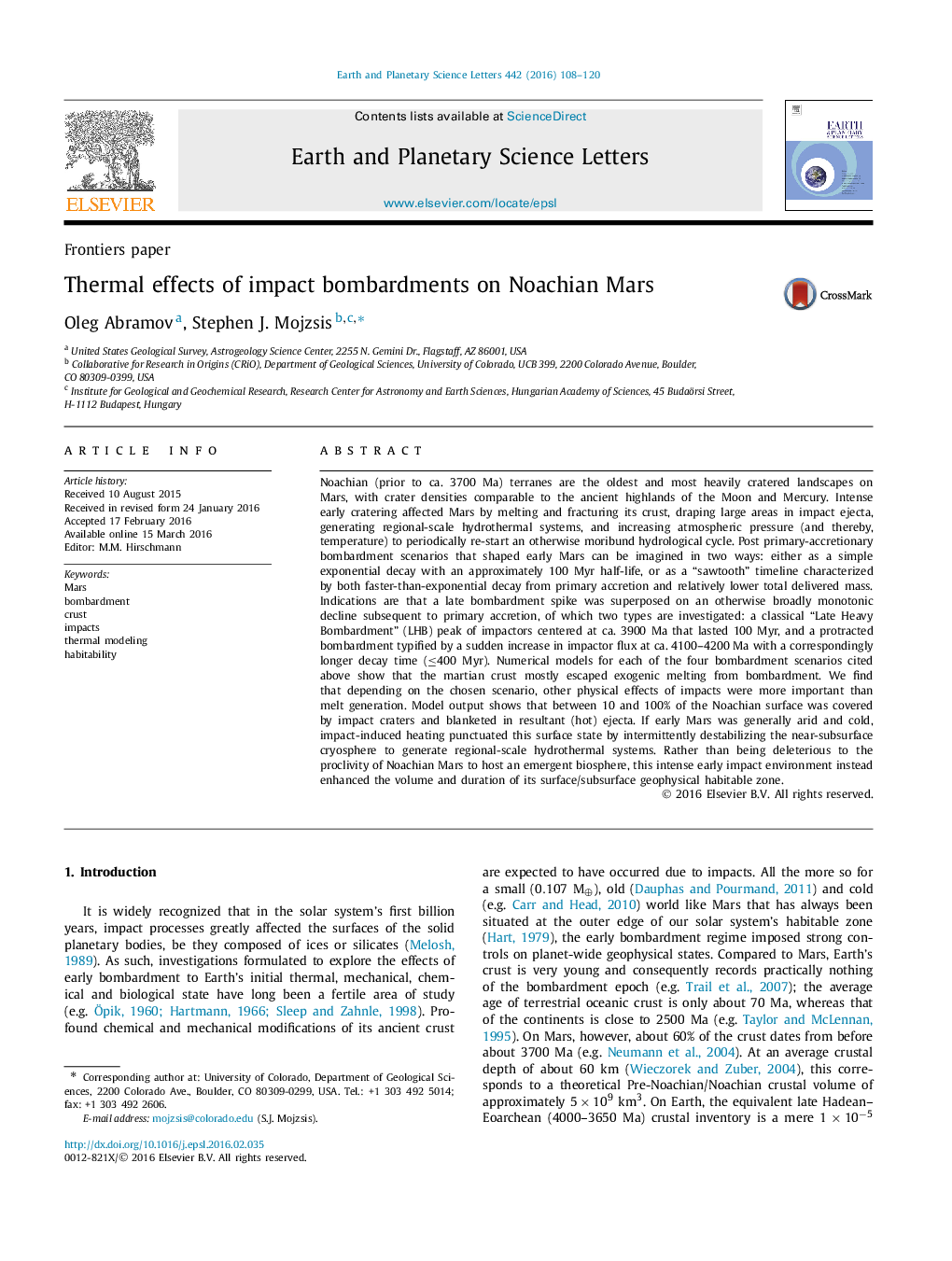| کد مقاله | کد نشریه | سال انتشار | مقاله انگلیسی | نسخه تمام متن |
|---|---|---|---|---|
| 6427537 | 1634714 | 2016 | 13 صفحه PDF | دانلود رایگان |

- Global thermal effects of early impact bombardments to the martian crust are modeled.
- Mars' crust escaped wholesale melting in a post-accretionary or late bombardment.
- Impact bombardments volumetrically increased the geophysical habitable zone of Mars.
Noachian (prior to ca. 3700 Ma) terranes are the oldest and most heavily cratered landscapes on Mars, with crater densities comparable to the ancient highlands of the Moon and Mercury. Intense early cratering affected Mars by melting and fracturing its crust, draping large areas in impact ejecta, generating regional-scale hydrothermal systems, and increasing atmospheric pressure (and thereby, temperature) to periodically re-start an otherwise moribund hydrological cycle. Post primary-accretionary bombardment scenarios that shaped early Mars can be imagined in two ways: either as a simple exponential decay with an approximately 100 Myr half-life, or as a “sawtooth” timeline characterized by both faster-than-exponential decay from primary accretion and relatively lower total delivered mass. Indications are that a late bombardment spike was superposed on an otherwise broadly monotonic decline subsequent to primary accretion, of which two types are investigated: a classical “Late Heavy Bombardment” (LHB) peak of impactors centered at ca. 3900 Ma that lasted 100 Myr, and a protracted bombardment typified by a sudden increase in impactor flux at ca. 4100-4200 Ma with a correspondingly longer decay time (â¤400 Myr). Numerical models for each of the four bombardment scenarios cited above show that the martian crust mostly escaped exogenic melting from bombardment. We find that depending on the chosen scenario, other physical effects of impacts were more important than melt generation. Model output shows that between 10 and 100% of the Noachian surface was covered by impact craters and blanketed in resultant (hot) ejecta. If early Mars was generally arid and cold, impact-induced heating punctuated this surface state by intermittently destabilizing the near-subsurface cryosphere to generate regional-scale hydrothermal systems. Rather than being deleterious to the proclivity of Noachian Mars to host an emergent biosphere, this intense early impact environment instead enhanced the volume and duration of its surface/subsurface geophysical habitable zone.
Journal: Earth and Planetary Science Letters - Volume 442, 15 May 2016, Pages 108-120